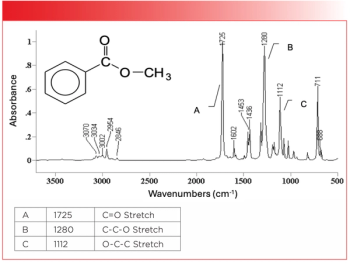
FT-IR Spectral Fingerprints Reveal Secrets of Rubies and Sapphires
Scientists at the University of Barcelona have developed a fast and reliable way to identify natural, treated, and synthetic rubies and sapphires using Fourier-transform infrared (FT-IR) spectroscopy. Their study reveals unique spectral fingerprints for different gemstone types, offering a powerful tool in the fight against gem fraud.
Gem Identification Goes High-Tech with Infrared Spectroscopy
In a world where synthetic gemstones are becoming nearly indistinguishable from their natural counterparts, a team of researchers from the Universitat de Barcelona has uncovered a powerful, non-destructive method to tell them apart. Using Fourier-transform infrared (FT-IR) spectroscopy, the team identified distinct vibrational fingerprints in natural, treated, and synthetic rubies and sapphires, creating a faster and more accurate gem identification method for gemological labs worldwide (1,2).
Published in the European Journal of Mineralogy, the study was authored by António Soares de Sousa, Elsa Maria Carvalho Gomes, Laura Bayés-García, Alessandra Di Mariano, and Maite Garcia-Valles—all affiliated with the Departament de Mineralogia, Petrologia i Geologia Aplicada at the Universitat de Barcelona (1).
The researchers analyzed 25 gemstones from the university's Gemology School collection using standard gemological tools and FT-IR spectroscopy. Their goal was to distinguish the gems not just by origin—natural or synthetic—but also by treatment history, which can significantly alter a gem’s appearance and market value (1).
“Traditional methods can miss subtle differences introduced by modern treatment techniques,” the authors note. “FT-IR provides a more nuanced look at the molecular structure, detecting even faint spectral signatures of impurities or treatment residues” (1,2).
Spectral Clues in the Infrared
FT-IR spectroscopy detects how molecular bonds vibrate when exposed to infrared light, providing a “fingerprint” unique to each sample. The study found that untreated natural rubies exhibited a band around 3230 cm⁻¹, while sapphires added a subtle 3310 cm⁻¹ peak. In contrast, Verneuil-grown synthetics displayed peaks at 3185, 3230, and 3310 cm⁻¹, with the last being especially intense in synthetic sapphires—likely linked to Ti–OH stretching bonds (1,2).
Glass-filled stones revealed different peaks—most notably at 2250, 2600, and 3300 cm⁻¹—while diffusion-treated gems had a faint 3310 cm⁻¹ band. These distinct signatures allow for clear classification and even reveal specific treatment types (1).
The team used a PerkinElmer Frontier FT-IR spectrometer, optimized with a potassium bromide beam splitter and a triglycine sulfate detector, ensuring precise measurements across the 400–4000 cm⁻¹ range. Gemstones were positioned carefully during analysis to reduce artifacts caused by shape, cut, or transparency (1).
Visual Evidence Matches Spectral Data
The FT-IR analysis was supported by traditional gemological techniques including microscopy, UV fluorescence, and refractive index measurements. These confirmed features such as rutile inclusions in natural stones, flux residue in synthetic ones, and gas bubbles in glass-filled specimens. Cobalt-glass-filled sapphires were especially distinct, showing both unique optical characteristics and infrared signatures (1,2).
One particularly revealing find was stone RS5, a flux-grown synthetic ruby containing a hexagonal platinum inclusion—likely from the crucible used during synthesis. This, along with FT-IR results, conclusively identified its origin (1).
Implications for the Gem Trade
As the global gemstone market increasingly relies on laboratory-produced or treated stones, reliable identification methods are critical. FT-IR spectroscopy, as demonstrated in this study, is not only fast and non-invasive but also highly accurate. The method could soon become standard in gemological labs, helping protect buyers, sellers, and collectors from misrepresented gems (1).
In conclusion, the study by Soares de Sousa, Gomes, Bayés-García, Di Mariano, and Garcia-Valles establishes FT-IR as a vital tool in modern gemology. Their work lays the groundwork for expanded gemstone databases and improved protocols, bringing greater transparency to a complex and valuable industry (1).
References
(1) Soares de Sousa, A.; Gomes, E. M. C.; Bayés-García, L.; Di Mariano, A.; Garcia-Valles, M. Fingerprinting of Ruby and Sapphire Gemstones through Fourier-Transform Infrared (FT-IR) Methodologies. Eur. J. Mineral. 2025, 37, 53–62. DOI:
(2) Shigley, J. E. Analytical Techniques in Gemology: A Historical Overview. Gems Gemol. 2024, 60 (4). Available at:
Newsletter
Get essential updates on the latest spectroscopy technologies, regulatory standards, and best practices—subscribe today to Spectroscopy.




